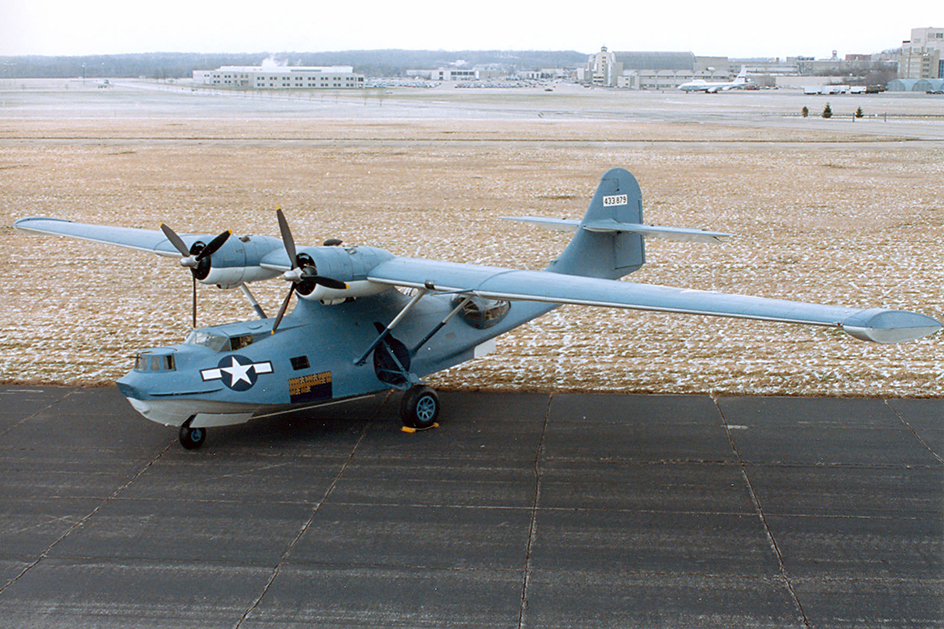PBY Catalina was a military airplane used by the United States and its allies during World War II (1939-1945). It was a two-engine flying boat, a plane with a hull that allowed it to land on water. The Catalina was used mainly for reconnaissance (information gathering). The versatile plane also flew sea rescue, transport, and bombing missions. The Consolidated Aircraft Company designed the plane. PBY stood for Patrol Bomber Y, with Y serving as a naval code for Consolidated. The Catalina became a lasting symbol of naval aviation.

The PBY had a massive parasol wing—_a single wing that rose above the plane’s _fuselage (body). Supports called struts attached the parasol wing to the fuselage below. The plane’s propeller engines sat atop the wing. Wing floats stabilized the PBY while on water. Later models also had wheeled landing gear for use on land.
The PBY carried as many as 5 heavy machine guns, 9 crew members, and about 4,000 pounds (1,814 kilograms) of bombs or torpedoes. It flew at a top speed of nearly 200 miles (321 kilometers) per hour. It reached a maximum altitude over 18,000 feet (5,486 meters). The seaplane had a range of more than 3,000 miles (4,828 kilometers).
Consolidated tested the first PBY’s in 1935. The U.S. Navy began using PBY’s in 1937. After the outbreak of World War II, Catalinas played important roles in Allied forces around the world. PBY’s patrolled the Atlantic and Pacific oceans in search of German and Japanese ships—particularly submarines.
In the North Atlantic, a British Royal Air Force PBY spotted the German battleship Bismarck, leading to the ship’s destruction. In the Indian Ocean, a Royal Canadian Air Force PBY warned a British fleet of a Japanese attack force, allowing the British to prepare their defenses. In the central Pacific, U.S. Navy Catalinas spotted a Japanese fleet approaching Midway Island, beginning the decisive Battle of Midway.
PBY Catalinas rescued thousands of sailors and downed aircrew. They carried supplies to remote island bases without airfields. Though the planes lacked speed and maneuverability, Catalinas also bombed enemy submarines and surface ships. Black-painted U.S. Navy squadrons—the “Black Cats”—flew night missions against convoys of Japanese shipping. Royal Australian Air Force PBY’s also flew night combat missions against the Japanese.
The last U.S. Navy PBY was retired in 1957. Since then, Catalinas have been used as commercial airliners and aerial firefighters. In total, more than 4,000 PBY’s were built, more than any other flying boat.
See also Bismarck ; Midway, Battle of ; World War II .
